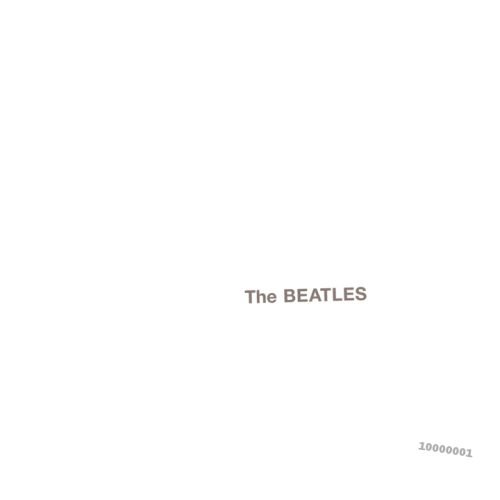In the rich tapestry of The Beatles’ discography, “The Beatles,” famously known as the White Album, stands as a monumental testament to the band’s unparalleled artistic evolution. Released in November 1968, this double album arrived at a pivotal moment, not just for the Fab Four but for the cultural and musical landscape that surrounded them. Coming off the heels of the technicolor dreamscape that was “Sgt. Pepper’s Lonely Hearts Club Band,” the White Album was both a radical departure and a deepening of The Beatles’ artistic journey.
The late 60s were a time of intense change and experimentation. Music was not just a form of entertainment; it was a cultural weapon, a means of exploration, and a mirror to the tumultuous world. In this setting, The Beatles, already at the zenith of musical innovation, ventured further into uncharted territories with the White Album. The starkness of its cover—a bold contrast to the psychedelic vibrancy of its predecessor—served as a prelude to the eclectic and raw sounds within. The album was a canvas where each Beatle painted with broader, more personal strokes, showcasing an astonishing variety of styles from rock ‘n’ roll, blues, and folk to avant-garde and beyond.
Artistic Intentions
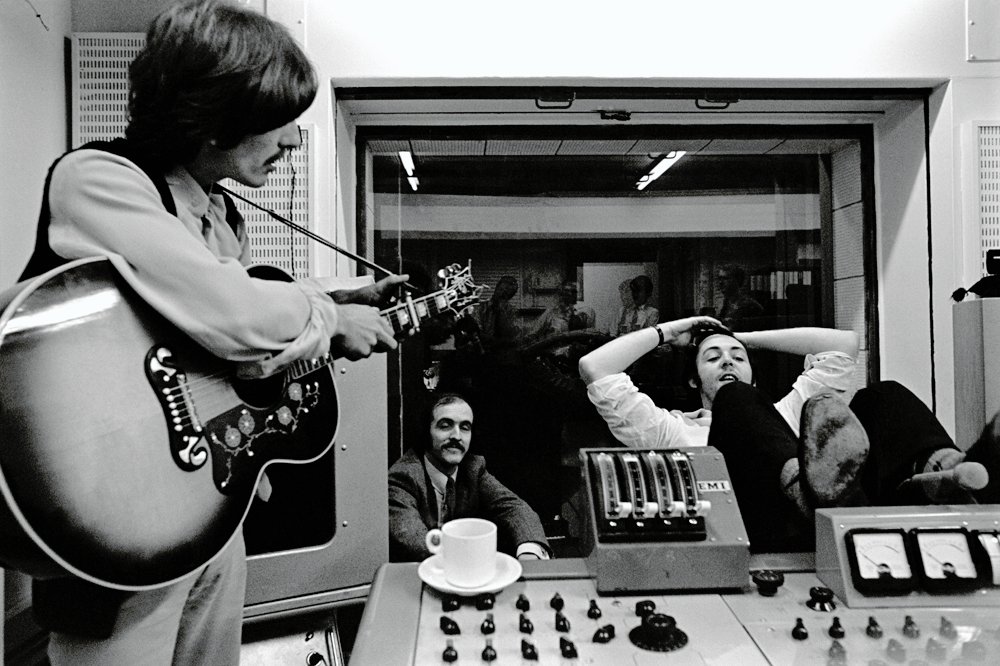
The artistic intentions behind the White Album are as layered and complex as its compositions. The Beatles sought not just to make another album but to redefine what an album could be. They experimented with songwriting and recording techniques, pushing the boundaries of the studio’s technological capabilities. This period marked a significant shift towards individual creative autonomy within the band, with each member contributing distinct, standalone pieces that reflected their personal influences and visions. This was a move away from the cohesive sonic narrative that characterized their previous works. Instead, the White Album unfolded as a collection of individual vignettes that, when pieced together, presented a mosaic of contemporary life, with its beauties, contradictions, and chaos.
All the experiences that happened in India was all embodied in that album. Most of those songs were written in Rishikesh like Julia and Blackbird and Dear Prudence.
George Harrison on The Beatles (White Album)
In essence, the White Album was The Beatles’ exploration of freedom—musical, creative, and personal. It was a demonstration of the band’s ability to not only adapt to but also lead the way in a rapidly evolving musical landscape. Through this album, The Beatles invited listeners into a more intimate, unvarnished reality, encouraging an encounter with the music that was as much about the listener’s imagination as it was about the band’s artistic expression. Through interviews and scarce album notes, the band members have hinted at this desire for creative liberation and experimentation, though much of the album’s intention can also be inferred from the music itself, a bold declaration of artistic independence that has influenced generations of musicians and listeners alike.
Sonic Exploration
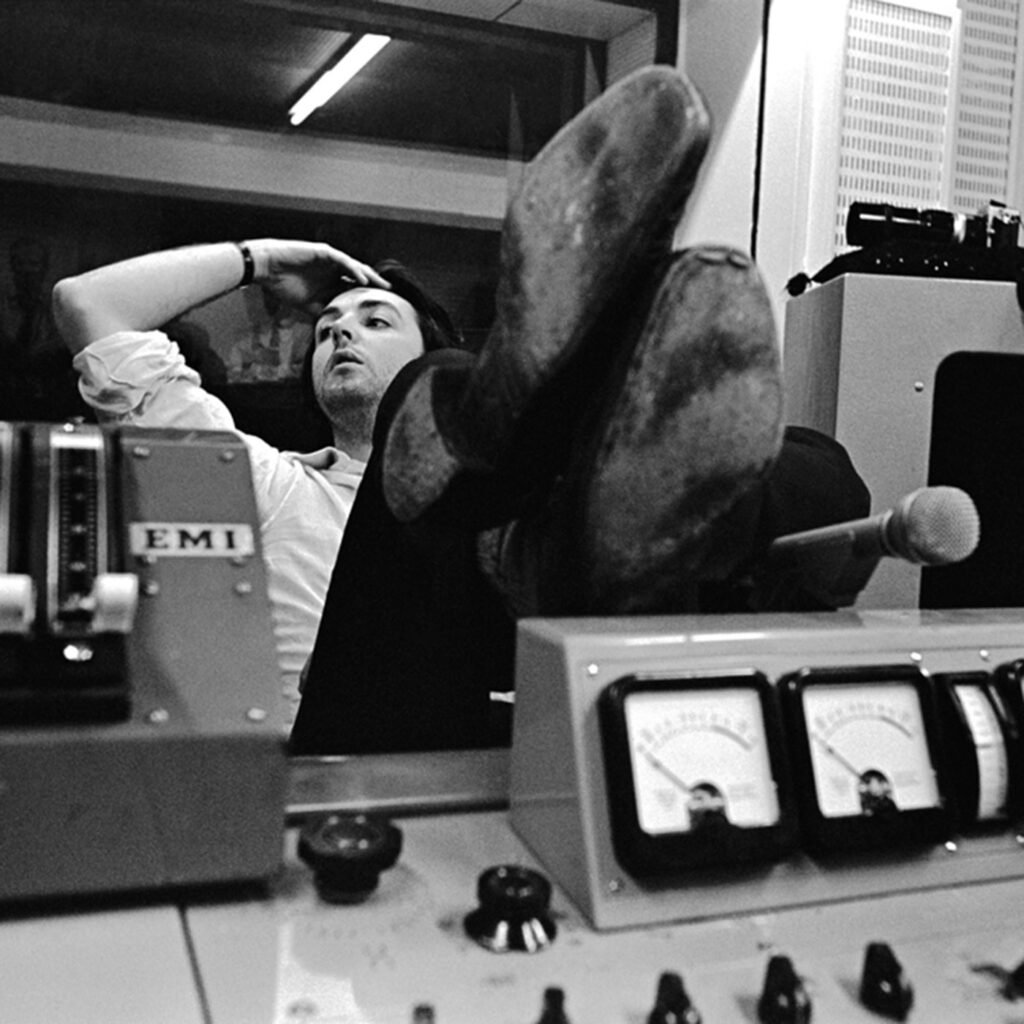
The Beatles’ White Album is a landmark in sonic exploration, a journey that stretches the fabric of production, arrangement, and genre. Its production quality is an eclectic mix that traverses the spectrum from the pristine to the intentionally raw and gritty. This variation in production serves as a mirror to the album’s thematic diversity and emotional range. For instance, the clarity and warmth in “Blackbird” stand in stark contrast to the deliberate roughness of “Helter Skelter.” Such choices underscore the album’s exploration of contrasting themes—peace and turmoil, simplicity and complexity—reflecting the multifaceted nature of human experience.
Musical Arrangements
The musical arrangements on the White Album are as varied as the genres it encompasses. The Beatles and their longtime producer, George Martin, along with engineer Geoff Emerick, crafted a soundscape where every instrument and vocal arrangement feels meticulously thought out yet spontaneous. The album features innovative uses of traditional rock instruments alongside a plethora of unconventional ones, such as the Mellotron, sitar, and Moog synthesizer. For example, “While My Guitar Gently Weeps” features a hauntingly beautiful arrangement with Eric Clapton’s guitar work weaving through a melancholic yet lush orchestral backing, showcasing the band’s willingness to blend rock with classical sensibilities. Meanwhile, “Happiness Is a Warm Gun” displays a mini-suite of varying musical styles, stitched together with vocal arrangements that range from doo-wop to hard rock, highlighting the band’s adeptness at multi-genre synthesis.
Genre Elements
In terms of genre, the White Album is a veritable encyclopedia of musical styles. It dabbles in blues (“Yer Blues”), folk (“Blackbird”), hard rock (“Helter Skelter”), avant-garde (“Revolution 9”), and even proto-metal, among others. This genre-blending is not merely superficial; each song delves deep into its respective style, often adding a unique Beatles twist that keeps the album cohesive despite its diversity. “Dear Prudence” unfolds with a tender, folk-inspired simplicity, while “Back in the U.S.S.R.” parodies and pays homage to the Beach Boys with its surf rock vibes, showcasing the band’s ability to traverse genres with both reverence and a sense of play.
Lyrical Analysis

The lyrical landscape of The Beatles’ White Album is a vast and varied territory, exploring themes of love, disillusionment, introspection, and social commentary. The album’s lyrics oscillate between the deeply personal and the broadly universal, offering a window into the band’s own experiences while also reflecting the broader societal tumult of the late 1960s. Notably, the album veers into the realms of storytelling, with songs like “Rocky Raccoon” painting vivid narratives, while others, such as “Revolution 1,” engage directly with the political and social upheaval of the era.
Central Themes
The central themes of the White Album are as eclectic as its musical compositions. There’s an introspective journey through songs like “Julia,” John Lennon’s haunting tribute to his mother, contrasting with the satirical commentary on the cult of personality in “Glass Onion.” The theme of disillusionment with the idealism of the 1960s is woven through tracks like “Revolution 1,” where Lennon voices skepticism about the efficacy of social movements. Simultaneously, a yearning for simplicity and authenticity emerges in the back-to-basics approach of “Mother Nature’s Son.” Recurring motifs of existential questioning and a search for meaning thread through the album, reflecting the band’s own struggles with fame and personal identity.
Lyrical Depth
The lyrical depth of the album is significant, with the band employing a range of poetic techniques from vivid imagery to metaphor, allusion, and irony. The lyrics oscillate between straightforward storytelling and abstract, impressionistic sketches that invite multiple interpretations. For example, “Blackbird” uses simple, evocative language to convey a message of hope and liberation, inspired by the Civil Rights Movement in the United States. In contrast, “Happiness Is a Warm Gun” is a mosaic of images and ideas that combine to create a piece that is open to myriad interpretations, from a commentary on addiction to a critique of consumer culture.
Emotional Impact
The emotional impact of the White Album’s lyrics is profound and multifaceted. Songs like “While My Guitar Gently Weeps” evoke a deep sense of melancholy and reflection, contemplating the nature of love and loss. Conversely, tracks like “Ob-La-Di, Ob-La-Da” and “Birthday” offer moments of joy and celebration, capturing the exuberance of life despite its trials. The album, through its lyrical diversity, invites listeners into a spectrum of emotional experiences, from empathy and sadness to joy and contemplation. The introspective lyrics of “I’m So Tired” and the whimsical absurdity of “Piggies” showcase the band’s ability to navigate a range of emotional territories, engaging listeners’ hearts and minds in equal measure.
Cohesion and Flow
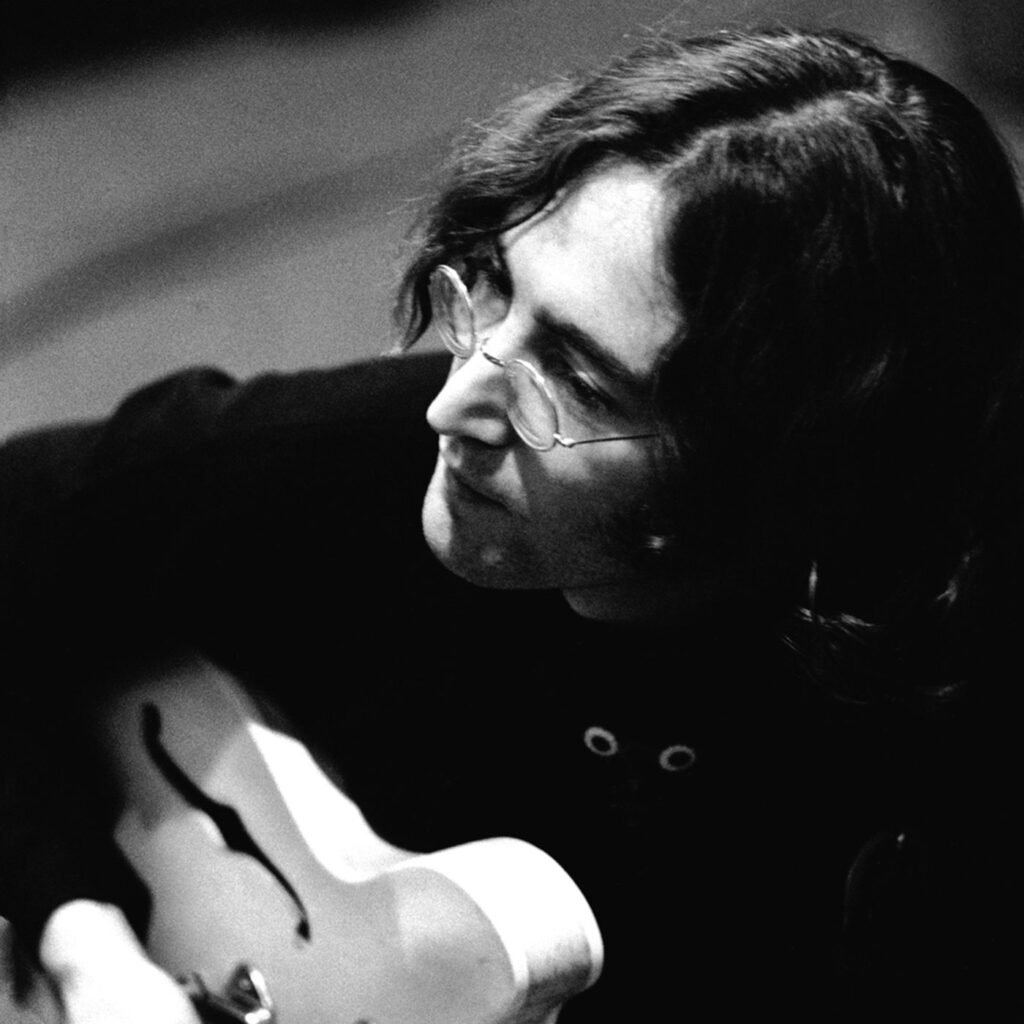
The Beatles’ White Album presents an intriguing case study in album cohesion and flow. With its sprawling diversity, the album defies traditional notions of a unified work, instead offering a patchwork of styles, themes, and emotions. This lack of conventional coherence is, paradoxically, one of the album’s greatest strengths, turning it into a mosaic that reflects the complexity of the human experience. However, this approach also means that listeners are taken on a journey that can feel disjointed at times, with abrupt shifts from the serene to the chaotic, the whimsical to the profound.
Track progression on the White Album does not follow a clear narrative or emotional arc in the traditional sense. Instead, it offers a kaleidoscopic experience, with each song standing as an independent piece of art. The transition from the hard rock aggression of “Helter Skelter” to the gentle lullaby of “Long, Long, Long,” for example, showcases this stark contrast in mood and style. Yet, within this apparent randomness, there is a subtle undercurrent of emotional and thematic progression that ties the album together. The sequencing encourages listeners to find their own connections and meanings, creating a personal journey through the Beatles’ explorations of love, conflict, introspection, and societal observation.
Thematic Consistency
Thematic consistency is maintained not in the repetition of themes but in their variation. The album touches upon recurring motifs of love, disillusionment, introspection, and social commentary, albeit through vastly different musical and lyrical expressions. This thematic diversity reflects the band’s exploration of a broad emotional and conceptual spectrum, mirroring the era’s cultural and social complexities. The stylistic shifts, rather than detracting from the album’s unity, enhance its representation of a world in flux. Each track contributes a unique color to the album’s overall palette, creating a work that is unified in its diversity.
Despite its eclectic nature, the White Album manages to feel like a cohesive work, albeit in an unconventional sense. The Beatles’ ability to weave together disparate elements into a coherent whole speaks to their mastery of the album as a form. The varied styles and emotions invite listeners to engage with the work actively, finding their own paths through its rich landscape. The transitions between tracks, while often jarring, serve to highlight the band’s creative range and willingness to push boundaries.
Standout Tracks and Moments
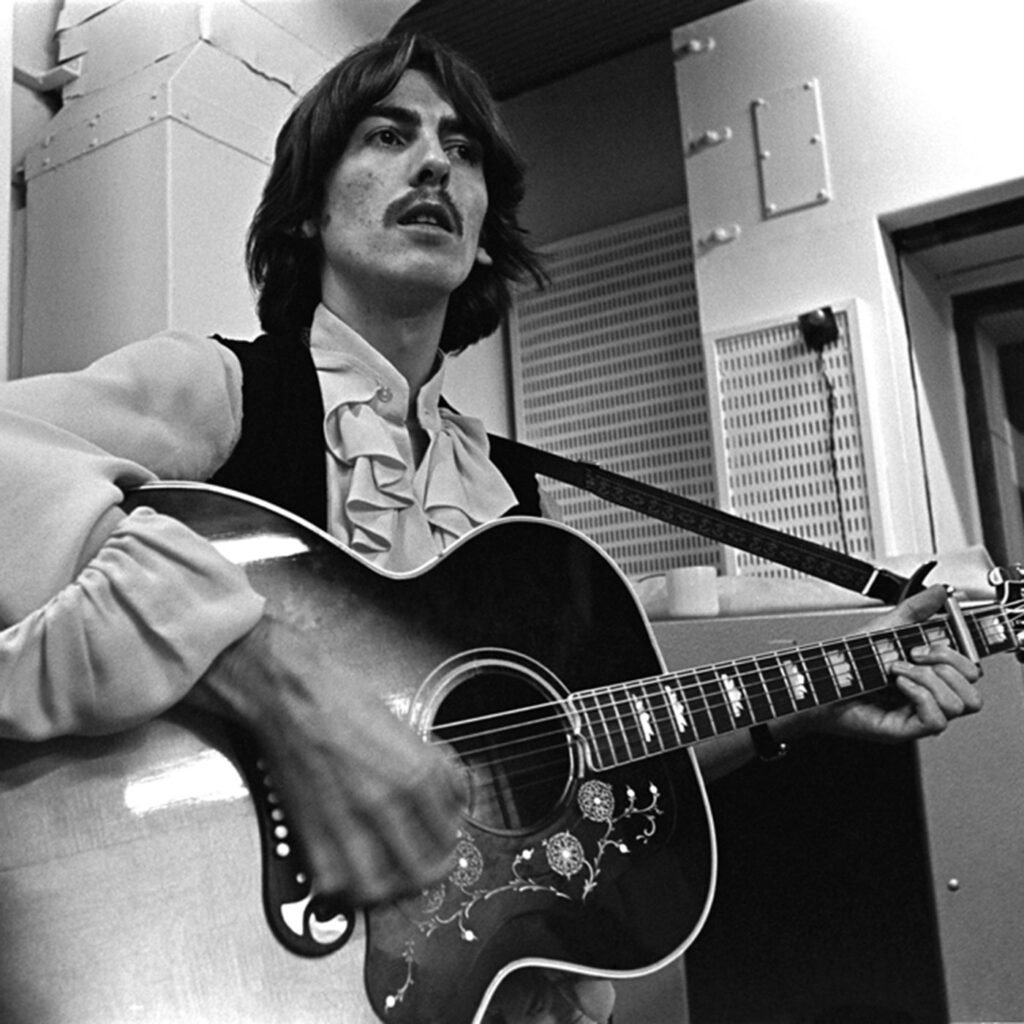
The White Album’s eclectic nature makes almost every track a standout in its own right, yet some songs particularly shine for their artistic innovation, emotional depth, and musical experimentation. These tracks not only highlight The Beatles’ diverse talents but also capture the essence of the album’s experimental spirit.
Key Tracks
“While My Guitar Gently Weeps”: George Harrison’s haunting masterpiece stands out for its emotional depth and musical complexity. The combination of Harrison’s poignant lyrics and Eric Clapton’s powerful guitar solo creates a moving meditation on love and loss. The track showcases The Beatles’ ability to blend rock with elements of classical music, creating a timeless piece that resonates with listeners for its beauty and sadness.
“Blackbird”: Paul McCartney’s simple yet profound acoustic ballad is a testament to the power of minimalism. Inspired by the Civil Rights Movement, “Blackbird” speaks to themes of freedom and hope with its elegant melody and poignant lyrics. The track’s solo guitar accompaniment and McCartney’s tender vocals make it a standout moment of vulnerability and introspection.
“Helter Skelter”: Often cited as one of the precursors to heavy metal, “Helter Skelter” is a departure from The Beatles’ typical sound, offering a raw, unbridled expression of energy and chaos. McCartney’s screaming vocals and the frenetic instrumental performance capture a sense of urgency and rebellion. This track stands out for its boldness and its influence on future generations of rock musicians.
Memorable Moments
The Opening of “Back in the U.S.S.R.”: The album kicks off with the roar of a jet plane, leading into a high-energy rock and roll number that parodies the Beach Boys’ surf sound while celebrating the joys of coming home. This energetic opener sets the tone for the album’s eclectic and experimental nature.
The Transition in “Happiness Is a Warm Gun”: This track is a journey through various musical styles, from blues to doo-wop to hard rock. The seamless transition between these distinct sections showcases The Beatles’ adventurous spirit and their mastery of diverse musical languages, making it a microcosm of the album’s overall approach.
The Entirety of “Revolution 9”: Perhaps the most avant-garde track ever included on a mainstream pop album, “Revolution 9” is an experimental sound collage that represents the peak of The Beatles’ artistic experimentation. Its inclusion on the album is a bold statement on the band’s part, challenging listeners to expand their conception of what music can be.
Each of these tracks and moments captures a different facet of The Beatles’ artistic vision on the White Album. From the simplicity and depth of “Blackbird” to the raw power of “Helter Skelter” and the avant-garde experimentation of “Revolution 9,” the album traverses a vast musical landscape. These standout tracks and moments not only highlight The Beatles’ remarkable versatility and creativity but also contribute to the enduring significance and appeal of the White Album as a landmark in music history.
Artistic Contribution and Innovation
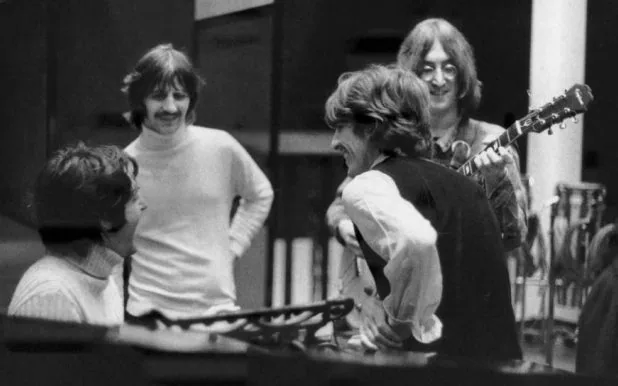
The White Album not only holds a revered place within The Beatles’ own discography but also stands as a monumental achievement in the broader music industry and rock genre. Its release marked a significant moment of boundary-pushing and genre-defying audacity that has influenced countless artists and albums in its wake. Far from adhering to established norms, the album is a testament to The Beatles’ willingness to experiment and challenge the expectations of both their audience and the industry at large.
Innovation in Production
The White Album broke new ground with its experimental production techniques. The Beatles and their production team, led by George Martin, embraced the studio as an instrument in its own right, experimenting with sound effects, tape loops, and unconventional recording methods. This approach not only enriched the album’s sonic texture but also expanded the possibilities of studio recording, influencing the production of rock and experimental music for decades to come.
Genre Fluidity
Perhaps the most striking aspect of the White Album’s innovation is its genre fluidity. By seamlessly incorporating elements of blues, folk, hard rock, avant-garde, and more into a single album, The Beatles shattered the notion of genre constraints. This eclectic mix not only showcased the band’s versatility and wide-ranging musical influences but also paved the way for future artists to explore genre fusion and hybridity without fear of losing their audience.
Thematic Exploration
The album’s thematic exploration—ranging from personal introspection and social commentary to abstract and surreal storytelling—offered a new depth of content in popular music. The Beatles used their platform to reflect on the complexities of the human condition, society, and the cultural landscape of their time. This bold thematic range set a precedent for artists to tackle a broader spectrum of subjects in their music, moving beyond love and relationships to address political, social, and existential issues.
The White Album’s artistic contributions and innovations extend beyond its immediate impact. It challenged and expanded the boundaries of what a rock album could be, both in terms of its sound and its substance. The album’s disregard for genre conventions and its embrace of studio experimentation encouraged musicians to view albums as cohesive works of art, where every aspect from songwriting to production could be leveraged to express complex ideas and emotions.
Closing Thoughts
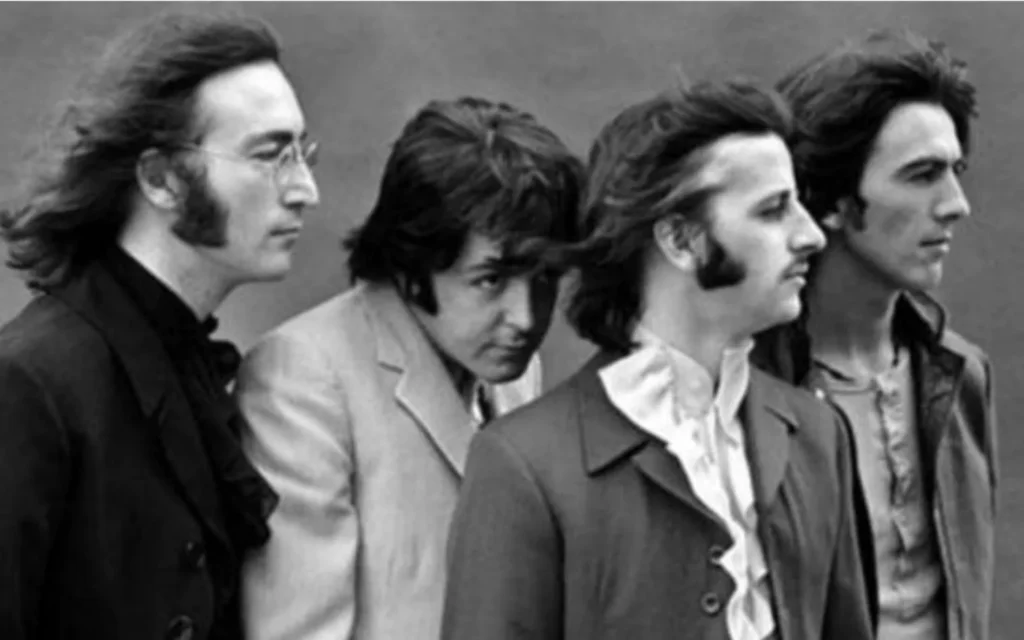
The Beatles’ White Album stands as a monumental achievement in the annals of music history, a testament to the band’s unbridled creativity, willingness to experiment, and unparalleled artistic vision. Its strengths are manifold, from the innovative production techniques and genre-defying compositions to the profound thematic depth and lyrical brilliance. Each track serves as a vignette, offering a unique auditory and emotional experience, yet together they compose a tapestry rich with the complexities of the human condition and the cultural zeitgeist of the era.
If the album has any weaknesses, they might lie in its sprawling nature, which can occasionally feel disjointed or overwhelming. Yet, even this aspect contributes to the album’s charm and historical significance, embodying the spirit of exploration and boundary-pushing that defined the late 1960s. The diversity of the album ensures that it offers something for every listener, though it may require an open mind and multiple listens to fully appreciate its depth and breadth.
The White Album’s impact on listeners is as varied as its content, capable of evoking a wide range of emotions, from joy to introspection, nostalgia to discovery. Its place in The Beatles’ career is equally significant; the album represents a pivotal moment of artistic freedom and experimentation, cementing their legacy as pioneers in the music industry. It challenged prevailing notions of what popular music could be, expanding the horizons for all who followed.
Official Rating
In light of its artistic contributions, innovation, and enduring influence, it is only fitting to award The Beatles’ White Album a perfect score of 10 out of 10. This rating is not just a reflection of the album’s technical excellence or its innovative approach to music production and genre blending. It is, more importantly, a recognition of the album’s profound impact on the music industry, its ability to speak to the human experience in all its diversity, and its enduring relevance in a rapidly changing world. The White Album does not merely entertain; it invites listeners to think, feel, and reflect, offering a musical journey as rich and varied as life itself. Its perfect score is a testament to its timeless quality and its place not just in The Beatles’ discography but in the heart of popular culture worldwide.
